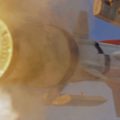I first worked with Kodak back in 1991, the Professional Motion Imaging (PMI) division of Kodak, who at the time made the majority of the film used in motion picture production and, more lucratively, 98% of that used in distribution.
I was working for a small London based software start-up, Parallax Software. We had produced a software application called Matador for creating and editing television images. At the time we had realised that we could build in software what existing systems such as Quantel Paintbox could only deliver with highly specialised hardware. In doing so we could create a very flexible product. Kodak saw what we could do and approached us explaining that they had a plan to create tools for digital film post-production (high resolution digital movie cameras were still 10 years or so away). They needed a paint system that could edit these high-resolution images and crucially could do so with a greater colour resolution than the 8 bits commonly used today.
I thought this was absolutely visionary. The Academy’s Scientific and Technical Awards committee obviously thought so too when they awarded the team an Oscar for Cineon.
We had already been working with the likes of Industrial Light and Magic (ILM), but the market was severely limited by the lack of pin registered, film resolution scanners. There were only two in the world at the time. I believe the first was built by Pacific Data Images who had one, ILM the other.
In short order we created Matador64 (so called because each pixel required 64 bits to store the red, green, blue and matte components).
Once I had worked my two year earn-out after we sold Parallax Software to Avid Technology, and I had realised that I was going to start self-harming if I continued to work for Avid, I looked around for new opportunities. I talked to Kodak and we discussed a role running the Cineon development team in Palo Alto. It sounded perfect. My family were the right age to try a sojourn abroad and I loved Northern California. Six months or so later, my heavily pregnant wife, two sons and I landed at SFO and started our new lives.
I joined the Cineon team, part of PMI who had a $1bn annual market in motion picture film.
We thought that given the right commercial approach we could build the Cineon software business to a respectable amount, perhaps a few tens of millions of dollars. But that would be only 1% or 2% of the current revenues, and it was going to cost money to get there. How could we convince Kodak that they had to accept that their $1bn revenue was going to go away because of the digital imaging revolution and that in order to have a place in that future, they had to embrace the future that was going to kill their PMI business.
Kodak was in trouble, falling revenues and negative profits. George Fisher responded by standing up at a shareholders meeting and promising that he would turn things around and deliver annual revenue growth of 10% year after year. His next step was to explain to the VPs in charge of each of the divisions that their job was now to deliver year on year 10% growth. So, George, let’s stop and do some elementary maths for a moment shall we? PMI had 98% of a $1bn annual market in motion picture film and you want 10% growth? What a turkey!
But commercial approach was a going to be a bit of an issue. On my first visit to Kodak HQ (and almost entirely Kodak town) Rochester, NY, I met with one of the VPs involved in Cineon (don’t ask, complex multi-dimensional matrix reporting structure). Keen to prove my commercial aptitude I asked her how many people worked on the Cineon project. She didn’t know and had to do some research. She came back to me the next day and said it was 23½ (half? Look I said, don’t ask alright?). “Oh” I retorted without a second thought “we’re making quite a big loss then”. She gasped. “How do you know that?” Did I tell you that this turkey had her PA print out emails at the beginning of the day so she could dictate answers?
So, 15 years later, it is clear that Christmas has come, as we all knew it would, and the turkey is cooked. What lessons in strategy can we take away from this? I think it is really tough, but when it is clear that a market is changing, that technology is going to revolutionise the market, it takes a supremely brave CEO to stand up and admit that their business must change, even if that means that it has to be a shadow of its former self.
Kodak spectacularly failed to do that. Despite inventing the core technology now used in digital cameras in 1975, despite foreseeing the digital film production revolution and building product for it in 1990, despite registering thousands of patents, despite all of this their leadership could not admit that Christmas was coming and that they were a raft of turkeys.



